どのショートスキープロファイルがあなたに合っていますか? それはあなたのスキーのスタイルと好みの地形によります。キャンバーは整備されたトレイルでの強力なグリップと安定性を提供し、ロッカーはターンを滑らかにし、柔らかい雪に適しています。多くの最新のショートスキーは、多用途性のために両方を組み合わせています。ここに簡単な内訳があります:
- キャンバー:硬い雪でのグリップ、安定性、精度に最適です。
- ロッカー:簡単なターン、柔らかい雪、混合コンディションに最適です。
- ハイブリッド(キャンバー+ロッカー):エッジコントロールと機敏さのバランスを取り、オールマウンテンスキーに最適です。
簡単比較
| プロファイル | 最適な用途 | 主な特徴 | 理想的な地形 |
|---|---|---|---|
| キャンバー | 精度とコントロール | 長い有効エッジ、強力なグリップ | 整備されたトレイル、硬い雪 |
| ロッカー | 簡単なターン、柔らかい雪 | 短い有効エッジ、遊び心のある感触 | POWDER、混合地形 |
| ハイブリッド | 多用途性 | キャンバーとロッカーの利点を組み合わせる | オールマウンテンスキー |
ショートスキーは、コンパクトなデザインのため、Snowfeet Skibladesのように、これらの違いをさらに際立たせます。カービング、さまざまな地形の探検、パークでの滑走など、あなたにぴったりのプロファイルがあります。あなたのスタイルに合った完璧なショートスキーを見つけるために、読み進めてください!
スキーのキャンバーとロッカーの解説 | スキー工房
ロッカーとキャンバープロファイルの解説
スキーデザインにおいて、スキーのプロファイルの形状はパフォーマンスに大きな影響を与えます。キャンバー、ロッカー、ハイブリッドという主要なプロファイルを分解し、それらがあなたの滑りにどのように影響するかを見てみましょう。
キャンバー:精密さとコントロールのためのクラシックなアーチ
キャンバースキーは地面に平らに置いたときに独特のアーチ形状を持ちます。スキーの中央が上向きにカーブし、中央と地面の間に隙間ができます。このデザインは1850年にノルウェーのソンドレ・ノルハイムによって初めて導入され、伝統的なスキー構造の基盤となっています。
このアーチ状のプロファイルは、ターン中に雪と接触するスキーの有効エッジを長くします。この延長されたエッジは、特に硬く締まった雪や整地されたトレイルで優れたグリップと安定性を提供します。圧力をかけるとアーチが平らになり、体重をスキー全体に均等に分散させて、正確でコントロールされたターンを可能にします。
ロッカー:楽にターンできる上向きの先端
ロッカースキーは「リバースキャンバー」とも呼ばれ、2001年にシェーン・マッコンキーとVolantによって導入されました。キャンバーとは異なり、ロッカースキーは先端(時にはテールも)を上向きにカーブさせており、ロッキングチェアのような形状を作り出しています。
この上向きのカーブはスキーの雪との接触面積を減らし、操作を容易にします。接触面積が短くなることで、より滑らかで楽なターンが可能になります。ロッカースキーは柔らかい雪やPOWDERで輝き、上向きの先端が雪に沈み込むのを防ぎ、浮かんでいる感覚を保ちます。ただし、硬い表面ではキャンバースキーに比べて安定性やグリップ感が劣ることがあります。それでも、混合雪の条件ではより許容範囲が広く適応力があります。
ハイブリッドプロファイル:両方の世界の融合
現代のスキーデザインは、かつてのキャンバー対ロッカーの議論を超えて進化しています。現在では、ほとんどのスキーが両方のプロファイルの要素を取り入れ、両方の長所を兼ね備えたハイブリッドデザインを実現しています。
キャンバー・ロッカーのハイブリッドは、安定性とエッジグリップを維持するために足元にキャンバーを備え、ターンの開始を容易にするために先端にロッカーを組み合わせています。この組み合わせはバランスの取れたパフォーマンスを提供し、オールマウンテンスキーの定番選択肢となっています。SnowfeetのSkibladesはこのハイブリッドアプローチの素晴らしい例です。65cm(26インチ)、99cm(39インチ)、120cm(47インチ)というコンパクトなサイズで、キャンバーのエッジコントロールとロッカーの遊び心ある素早いターン性能を組み合わせています。この考え抜かれたデザインは、整地されたコースでの信頼できるパフォーマンスを保証しつつ、楽しく多用途に使えます。
| プロファイルタイプ | 形状 | 効果的なエッジ | 最適な条件 | 主な利点 |
|---|---|---|---|---|
| キャンバー | 上向きにアーチ状 | より長い | 硬く締まった、整備された | 優れたグリップとコントロール |
| ロッカー | 曲がったチップ | より短い | 柔らかい雪、POWDER | 簡単なターン開始 |
| ハイブリッド | 両方の組み合わせ | 可変 | オールマウンテン、ミックス地形 | 多用途パフォーマンス |
プロファイルがShort Skisの性能に与える影響
Short Skisはロッカーとキャンバーの効果をより顕著にします。Snowfeetのラインナップのようなコンパクトなデザインは、長いスキーが滑らかにするような部分を強調し、応答性を高めます。それぞれのプロファイルがShort Skisのパフォーマンスにどのように影響するかを見てみましょう。
なぜキャンバーがShort Skisで輝くのか
キャンバープロファイルはShort Skisに精度とコントロールを加えます。アーチ状の形状はスキー全長に比べて有効エッジを長くし、整備されたトレイルや硬い雪での優れたグリップを実現します。Short Skisでは、このデザインが応答性を高めます。例えば、Snowfeetの120cmキャンバーSkibladesは、従来の長いスキーでは真似できない鋭く正確なターンを得意とします。キャンバーはまた、不整地(モーグルなど)でもスキーが凹凸の下り面にしっかり接触し続けるため、安定性と応答性の組み合わせにより、高速かつアグレッシブなターンに最適でありながら、機敏な感覚を失いません。
なぜロッカーがShort Skisで優れているのか
ロッカープロファイルはShort Skisにまったく異なる雰囲気をもたらします。先端が上向きになっているため、接地長が短くなり、ターンの開始とコントロールが容易になります。Snowfeetのロッカーモデルは、狭い場所や難しい雪の条件でも楽にピボットできるよう設計されています。さらに、ロッカーデザインはエッジを引っかける可能性を最小限に抑え、初心者が技術を習得する際の大きな助けとなります。柔らかい雪やPOWDERでは、上がった先端がスキーを浮かせ、雪に沈むのを防ぎます。ただし、ロッカーのShort Skisは有効エッジが短いため非常に高速時にはやや安定性が劣ることがあり、中速での遊び心あるスキーに最適です。
ロッカーとキャンバー:簡単比較
| 特徴 | Short Skisのキャンバー | Short Skisのロッカー |
|---|---|---|
| エッジグリップ | 硬い雪での強いグリップ | 整備されたトレイルでのグリップが弱い |
| ターンの開始 | 精度にはより多くの努力が必要 | 滑らかで簡単 |
| 安定性 | 高速時に非常に安定している | 高速時の安定性が低い |
| 初心者に優しい | 初心者にはより挑戦的 | 非常に寛容で学びやすい |
| 最適な地形 | 整備されたトレイル、硬く締まった雪 | 柔らかい雪、混合コンディション |
| 操作性 | コントロールされた力強いターン | 素早く遊び心のあるピボット |
| スピード性能 | 高速スキーに最適 | 中速に最適 |
| エッジキャッチのリスク | 初心者向けに高め | はるかに低い |
この比較は、Snowfeetの緻密なデザインがショートスキーの長所を引き出し、異なるスキーのスタイルやニーズに合わせてプロフィールを調整していることを示しています。
sbb-itb-17ade95
あなたのスキーのスタイルに合ったプロフィールの選び方
Snowfeet profileをあなたのスキーのスタイルにどう合わせるかについて話しましょう。Snowfeetのデザインは、多様なスキーの好みに対応し、RossignolやAtomicのような伝統的なロングスキーに比べてパフォーマンスの優位性を提供する点で際立っています。ここではあなたにぴったりのモデルを見つけるための内訳を紹介します。
カービング愛好者に最適な選択
もし整備されたコースでの鋭くアグレッシブなターンが好きなら、Snowfeetの120 cm Short Skisが最適です。これらのスキーはキャンバー+ロッカーデザインを採用しており、機敏さを犠牲にせずに最高のエッジコントロールを実現します。短い長さはよりタイトで正確なターンを可能にし、ミスからのリカバリーも簡単にします。さらに、硬く締まった雪でも満足のいくエッジグリップが得られます。ヨーロッパで手作りされており、カービング愛好者が求める品質と精度で作られています。
さて、オールマウンテンスキーヤー向けのより多用途な選択肢を見てみましょう。
オールマウンテンスキーに最適な選択
あらゆるものを少しずつ楽しみたい方には、Snowfeetの99 cm Skibladesが完璧なバランスを提供します。先端ロッカーと足下のキャンバーにより、これらのスキーは整備されたトレイル、でこぼこしたコース、混合地形を、長さが倍の多くの伝統的なオールマウンテンスキーよりも上手くこなします。短い設計は非常に機敏で、狭い場所でのピボットや難しい雪質の扱いを楽にします。Volklのような他のオールマウンテンオプションと比べても、これらのskibladesは比類なき多用途性を提供します。
パウダーの準備はできましたか?次の選択肢を見てみましょう。
パウダー&オフピステスキーに最適な選択
もし深雪やオフピステの冒険に向かうなら、POWDER 99 cm Skibladesが頼りになります。フリーライドロッカープロファイルを持つこれらのスキーは、先端を浮かせてパウダーに突っ込むのを防ぎます。素早いピボット操作が可能で、密集した木々や不均一な地形のナビゲートが容易です。長いパウダースキーとは異なり、これらのskibladesは瞬時に方向転換できるため、未踏の雪を躊躇なく探検する自信を与えます。
最後に、フリースタイルについて話しましょう。
パーク&フリースタイルスキーに最適な選択
パークライダーやフリースタイル愛好者にとって、Snowfeetの65 cm Skibladesはゲームチェンジャーです。フルロッカープロファイルを備えたこれらのスキーは寛容で、トリックの習得やパークのフィーチャーに最適です。コンパクトなサイズはより速いスピン、滑らかな着地、そして迅速なリカバリーを可能にします。さらに、フルロッカー設計はスピン中やバランスを崩した着地時のエッジの引っかかりリスクを減らします。初めての360度回転に挑戦する時も、高度なトリックを決める時も、これらのskibladesはあなたの上達をサポートします。
なぜSnowfeet Short Skisが伝統的な長いスキーに勝るのか
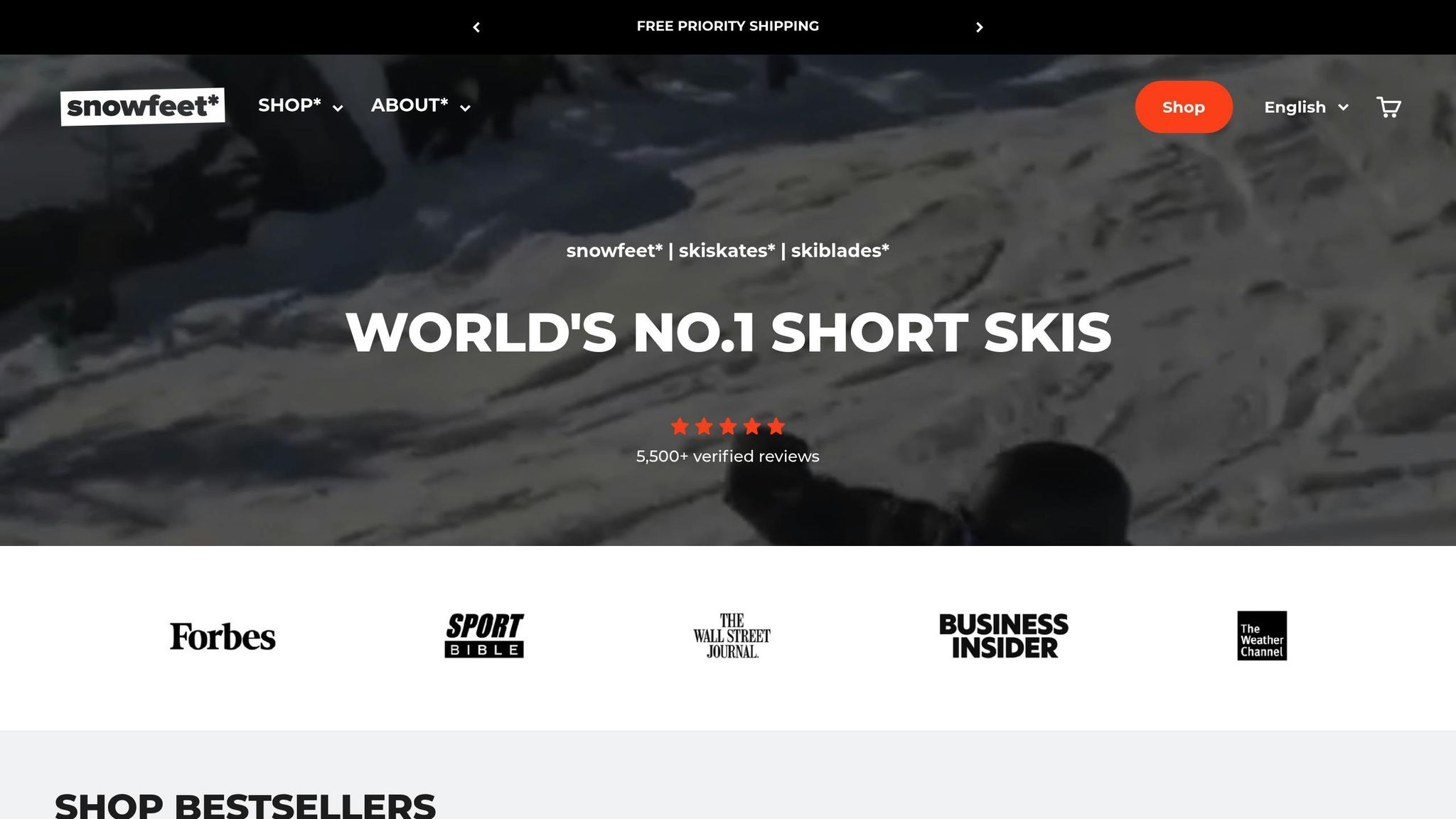
Snowfeet short skisは、Rossignol、Atomic、そしてHeadのようなブランドの伝統的な長いスキーを凌駕し、ゲレンデに新しい風をもたらします。その巧妙なデザインとコンパクトなサイズは、従来のスキーでは得られない利点を提供します。
パフォーマンスを犠牲にせず持ち運びも簡単
正直なところ、従来の長いスキーを運ぶのは面倒です。かさばるルーフラックや大きなバッグが必要で、突然のスキー旅行は物流的な悪夢になります。一方、Snowfeetショートスキーは標準モデルより最大20インチ短く、このコンパクトなサイズなら車に放り込んだり、楽に持ち運んだりできます。
しかし、そのサイズに騙されてはいけません - これらのショートスキーは本格的なパフォーマンスを備えています。軽量のファイバーグラス構造のおかげで、従来のセットアップよりもはるかに軽量です。さらに、どんな冬用シューズやスノーボードブーツとも互換性があり、重くて専門的なスキーブーツを完全に省くことができます。この携帯性とパフォーマンスの組み合わせにより、いつでもどこでも雪に出かける準備が整います。
あらゆる雪の条件に対応する多用途性
Snowfeetショートスキーの際立った特徴の一つは、あらゆるタイプの雪に対応できることです。従来のスキーでは、パウダー、整地されたコース、混合地形など、条件ごとに異なるスキーが必要になることが多いですが、Snowfeetはその問題を解消します。これらのショートスキーは整地された斜面、POWDER、モーグル、さらには一部のオフピステエリアでも美しく機能します。
軽量設計により、変化する状況に素早く対応できる機敏さを実現し、多様な地形をナビゲートするのに最適です。従来のスキーは特定のスタイルに合わせて作られることが多いですが、Snowfeetの考え抜かれたデザインは一日中滑走をスムーズで反応良く保ちます。
初心者にもエキスパートにも最適
Snowfeetのショートスキーは初心者と上級者のギアの壁を打ち破ります。初心者にとっては、短い長さがバランスと操作を格段に容易にし、より良いコントロールと安定性をもたらします。寛容なロッカープロファイルにより、初めての人でもすぐにスキーの感覚をつかめます。
経験豊富なスキーヤーにとって、Snowfeetの正確なキャンバーとロッカーの組み合わせは無限の可能性を開きます。タイトなターンを刻むときも、クリエイティブなトリックを決めるときも、これらのスキーは限界に挑戦する自由を提供します。
レビューが証明しています - Snowfeet製品は常に高評価を獲得しており、評価は5点満点中4.9から5.0の範囲です。99cmや120cmのSkibladesモデルは完璧な5.0/5の評価を誇ります。初心者モデルとパフォーマンスモデルを分ける従来のブランドとは異なり、Snowfeetは誰にでも合う単一のデザインを提供しています。
あなたにぴったりのショートスキープロファイルを選ぼう
ロッカーとキャンバープロファイルの仕組みがわかったところで、あなたにぴったりのSnowfeet short skiを見つけましょう。Snowfeetの特徴は、両方のプロファイルの良さを各モデルに融合させていることです。これにより、RossignolやAtomicのような専門的なデザインとは異なり、多用途で適応力のあるスキーが生まれています。ここで彼らのラインナップを詳しく見て、あなたの選択の参考にしてください。
カービング愛好家の皆さん、これはあなたのためのモデルです!120cm Snowfeet Short Skis(690ドル)は、整備されたコースでクリーンで正確なターンを切るのが好きな方にぴったり。キャンバー+ロッカーのデザインにより、カービングに優れたエッジグリップを提供しつつ、ショートスキーならではの軽快な感触を保ちます。SkiMag.comの説明によると:
キャンバーは雪と接触するエッジの量を増やし、整備されたコースや硬い雪でのスキーの性能を高めます。
.
120cmモデルでは、滑らかなカービングのためのキャンバーエッジと、素早い方向転換に十分な機敏さが得られます。
オールマウンテンスキーヤーには、99cm Snowfeet Skiblades(490ドル)が安定性と操作性のバランスが絶妙です。ロッカーの浮力でPOWDERの日も対応し、キャンバーの精密さで整備されたトレイルもこなせるため、多様な地形に挑むのに最適な選択です。SkiMag.comはこうまとめています:
ロッカーはスキーをより多用途にし、クラッド、バンプ、POWDERに対応しやすくします。
.
このモデルは多用途で、整備されたコースからオフピステの冒険まで楽々こなせるあなたの頼れる相棒です。
フリースタイルやパークライディングが好きなら、65cm Skiblades(450ドル〜)や44cm Skiskates(390ドル〜)のような短いモデルをチェックしてください。これらのコンパクトなスキーは、素早いスピン、スムーズな着地、そして速いリカバリーのために作られています。ロッカープロファイルはターンの開始を容易にし、短い有効エッジが伝統的なHeadやElanの長いスキーにはない遊び心と活気ある感触を与えます。
Snowfeetの素晴らしいところは、1足のスキーであらゆるコンディションに対応できる点です。Atomicのようなブランドがカービング、POWDER、フリースタイルスキーのいずれかを選ばせるのに対し、Snowfeetのスマートなプロファイルコンボはすべてに対応可能です。99cmモデルは、よく考えられたデザインが多様な地形とコンディションをこなせる好例です。
どのモデルを選んでも、Snowfeetの革新的なプロファイルは多様性とパフォーマンスを前面に押し出し、すべての滑走をよりエキサイティングにします。
よくある質問
整備されたトレイルとオフピステの両方を楽しむなら、キャンバーとロッカーのどちらのスキープロファイルがベストですか?
どのように、どこでスキーを楽しみたいかによって、キャンバーとロッカーのスキープロファイルの選択が決まります。キャンバープロファイルは整備されたトレイルで優れており、しっかりとしたエッジグリップ、安定性、そして滑らかでシャープなターンのための正確なコントロールを提供します。硬く締まった雪でのカービングやよく整備された斜面をクルーズするのが好きなら、キャンバースキーが最適です。
一方、ロッカープロファイルはオフピステの冒険に最適です。POWDERでの浮力が高く、ターンが楽に感じられるため、予測不能な地形を探検するのが好きなスキーヤーにぴったりです。両方の良さを求めるなら、ロッカー-キャンバー-ロッカーのようなハイブリッドプロファイルが、キャンバーの安定性とロッカーの多用途性を融合し、最高のバランスを提供します。
さて、SnowfeetのSkibladesについて話しましょう。65cm、99cm、120cmなどのサイズがあり、これらのコンパクトなスキーはあらゆるコンディションでの機敏さとパフォーマンスを追求しています。RossignolやAtomicのような従来のスキーとは異なり、Snowfeetの軽量設計は整備されたコースと新雪の間をシームレスに切り替えられます。Snowfeetなら、妥協なしで楽しく柔軟なスキー体験が得られます!
Snowfeet short skisは初心者に優しいですか?また、学習用の従来のスキーと比べてどうですか?
はい、Snowfeet short skisは初心者に最適な選択肢です。軽量でコンパクトなデザインにより、従来の長いスキーよりも操作やコントロールがずっと簡単です。38cmから120cmまでの長さがあり、これらのショートスキーはより素早いターンを可能にし、新しいスキーヤーが基本を早く習得してゲレンデでの自信を高めるのに役立ちます。
一方、従来のスキーは通常150cm以上の長さがあり、初心者にはかさばり重く感じることがあります。習得にも時間と労力がかかることが多いです。もう一つの利点は?Snowfeetスキーは特別なスキーブーツを必要とせず、普通の冬用ブーツで使えます。これにより利便性が高まるだけでなく、コストも節約できます。使いやすさ、手頃な価格、多用途性が、スキー初心者にとって堅実な選択肢となっています。
なぜハイブリッドプロファイルはショートスキーでのオールマウンテンスキーに理想的なのでしょうか?
ハイブリッドプロファイルは、ロッカーとキャンバーの両方の強みを組み合わせており、オールマウンテンスキーの定番選択肢となっています。足元のキャンバーにより、整備されたトレイルでのエッジコントロールと安定性が得られます。一方、先端のロッカーはターンを楽にし、POWDERを滑る際の浮力を向上させます。この組み合わせにより、さまざまな地形や雪質を楽にこなす柔軟性が得られます。
Snowfeetのようなハイブリッドプロファイルを持つショートスキーは、その機敏さと素早い反応で際立っています。鋭く正確なターンを愛し、最高の操作性を求めるスキーヤーにぴったりです。硬い雪面でのカービングやミックス地形の攻略など、これらのスキーは長いスキーでは再現できない遊び心あふれる多用途な乗り心地を提供します。












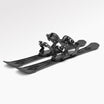

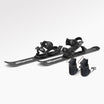






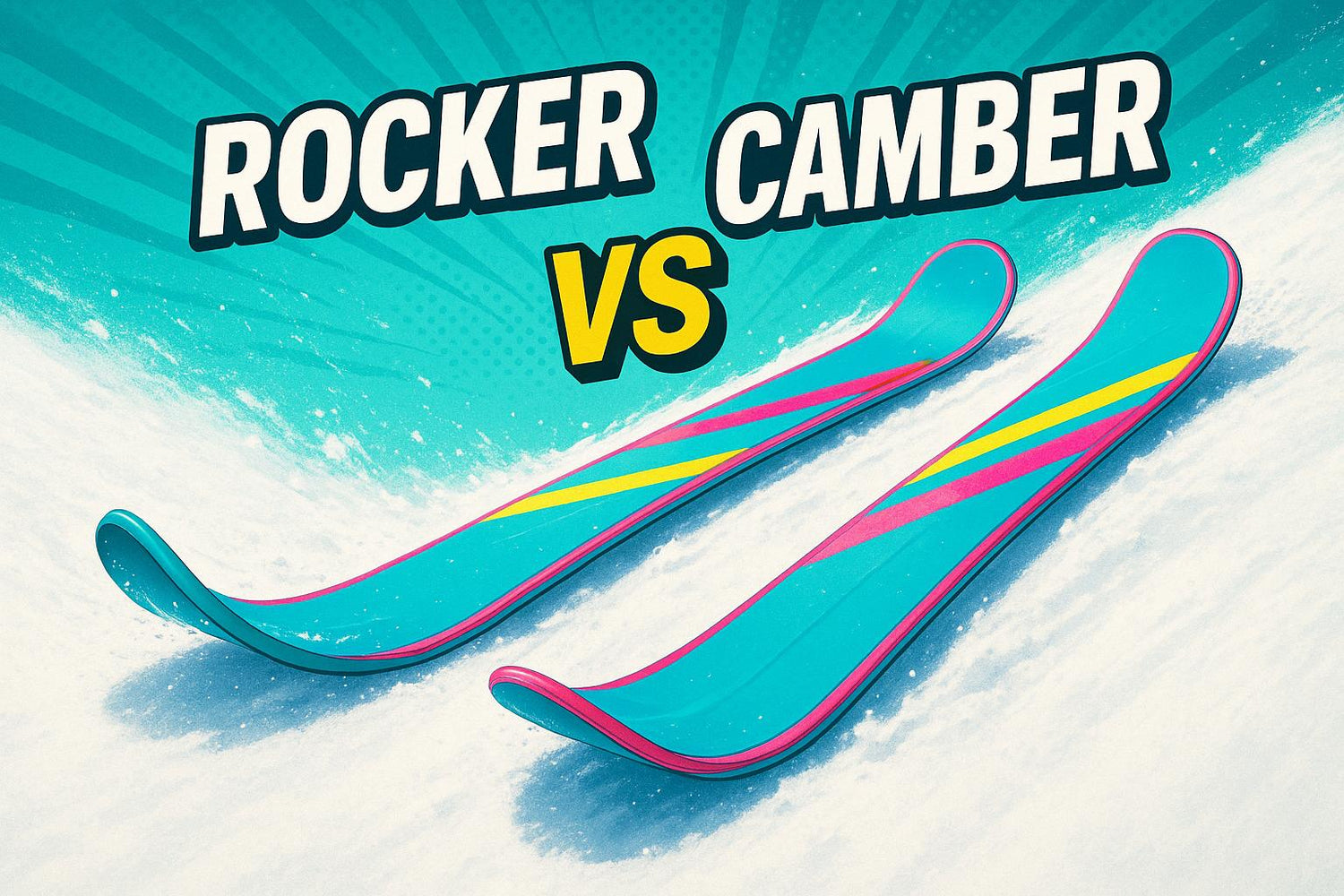
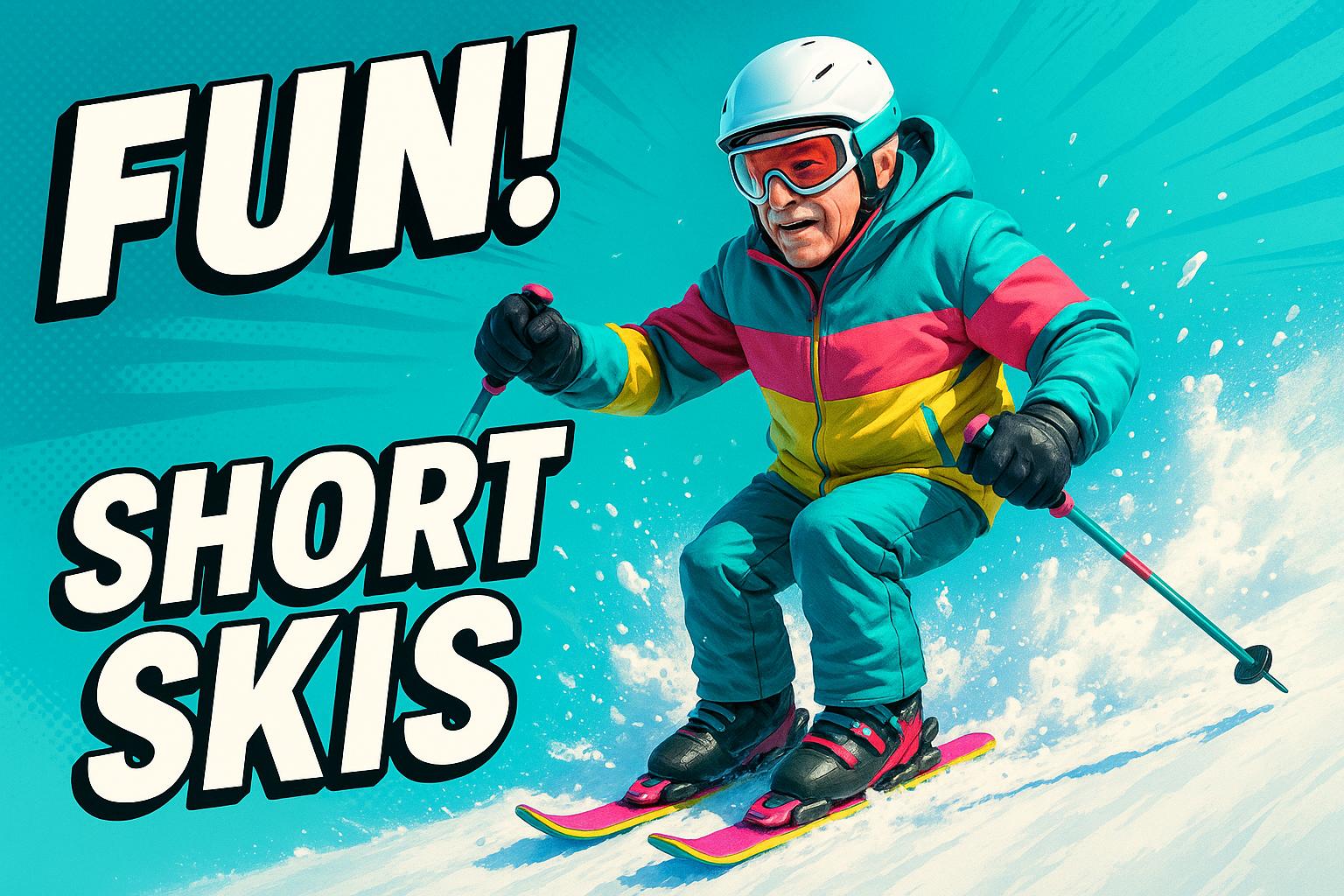
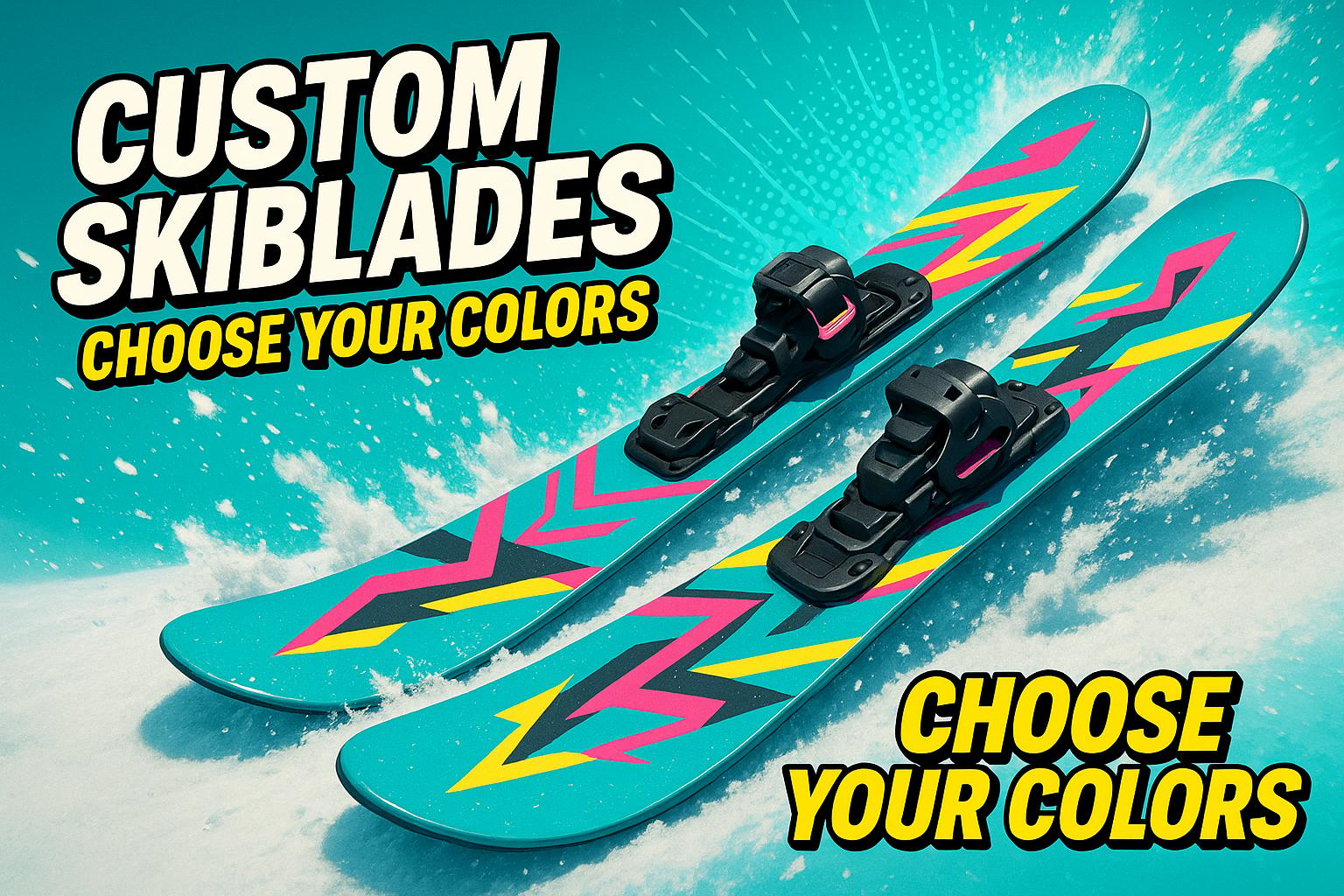



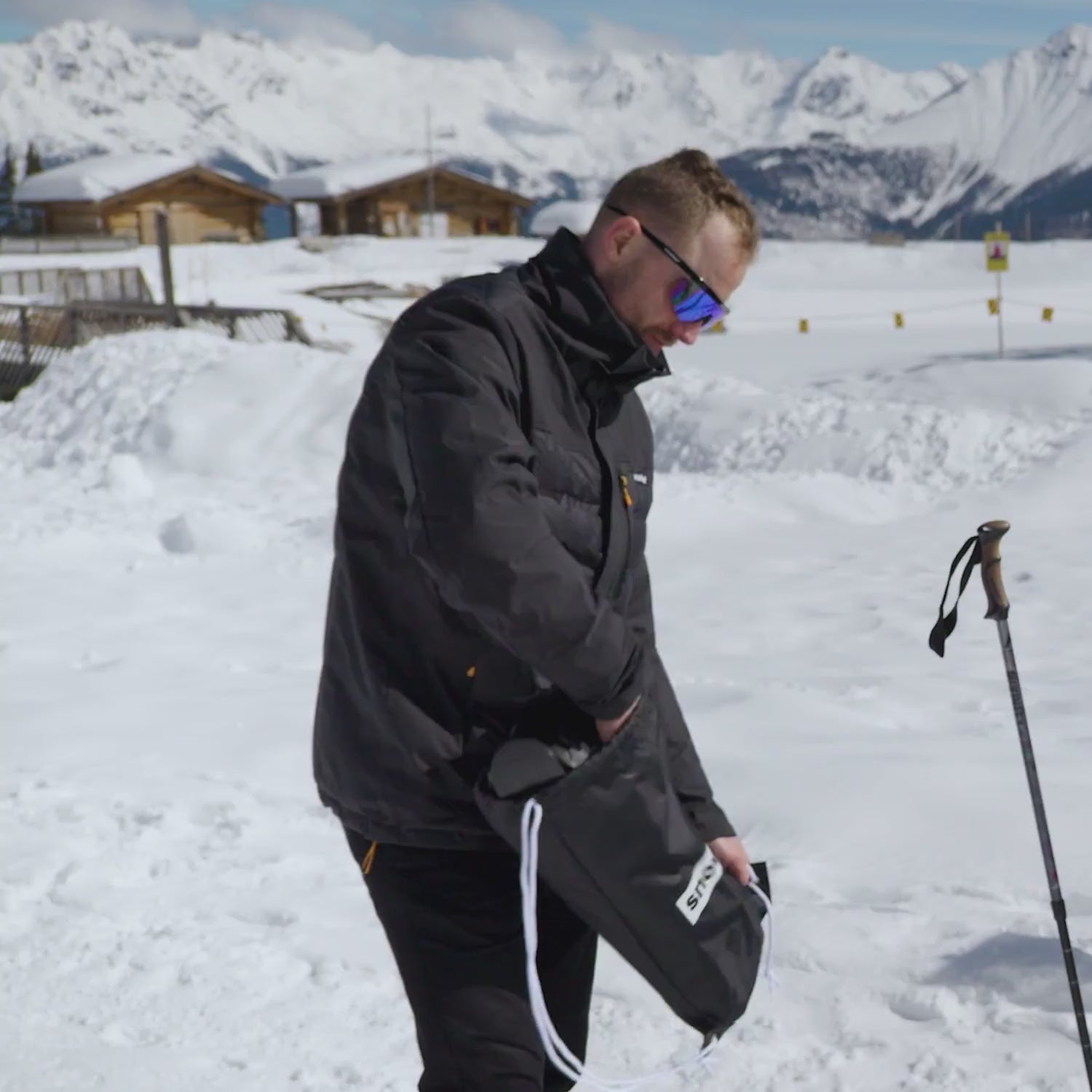



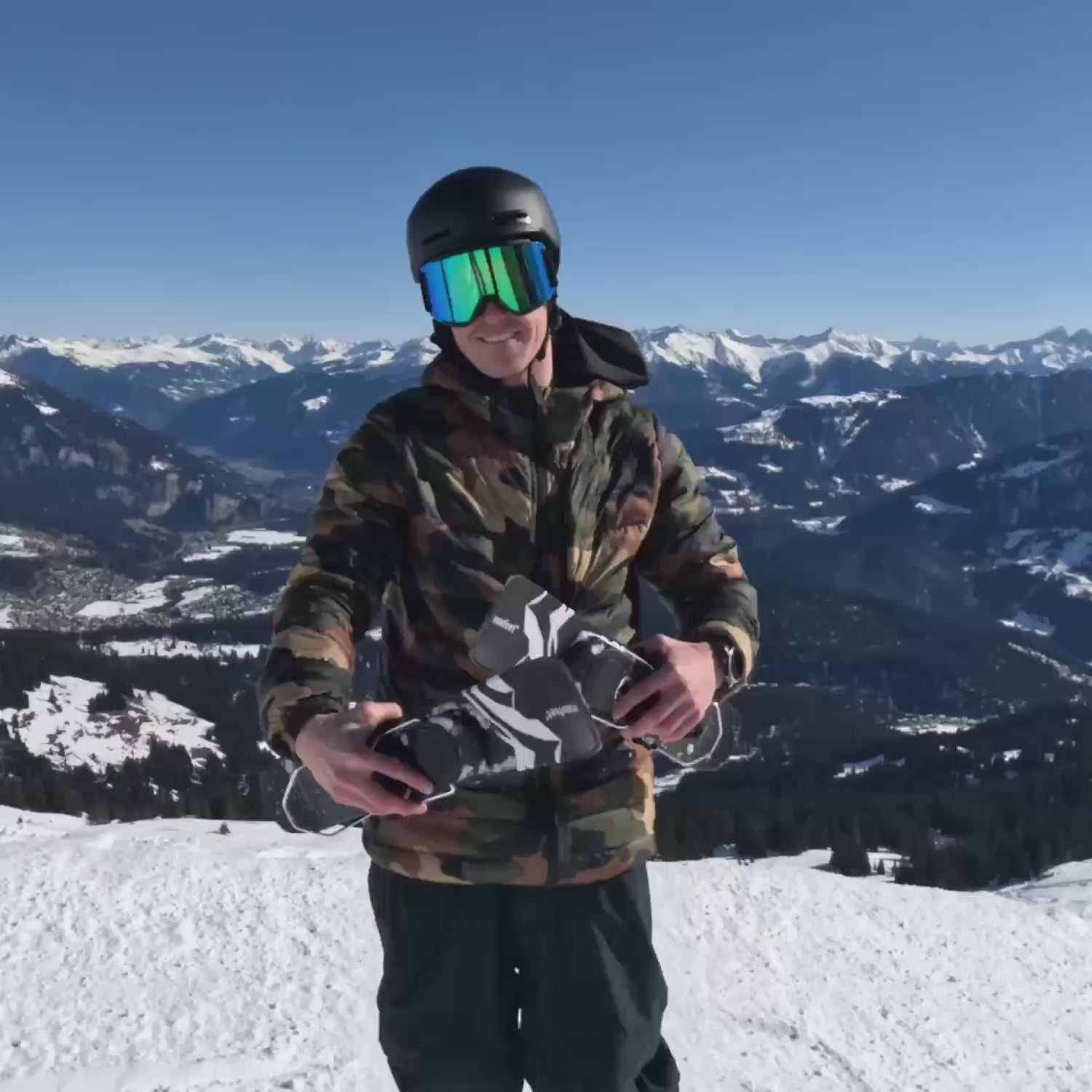

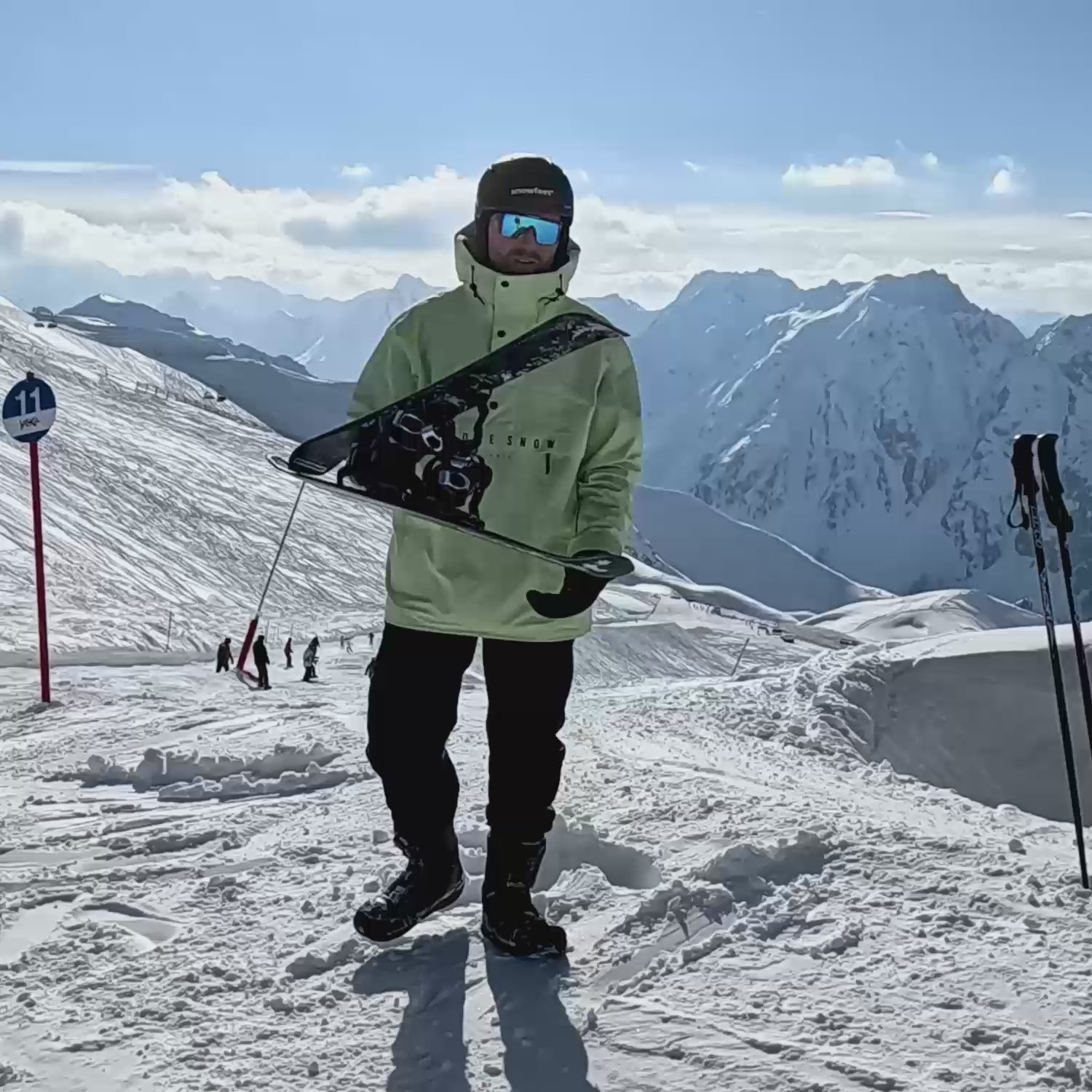
コメントを残す
このサイトはhCaptchaによって保護されており、hCaptchaプライバシーポリシーおよび利用規約が適用されます。